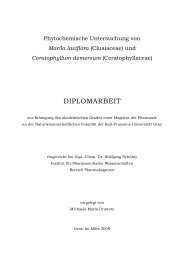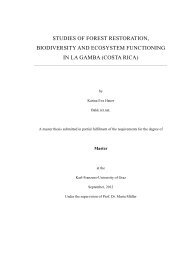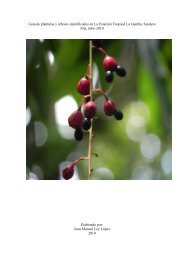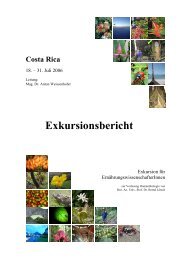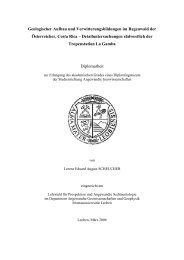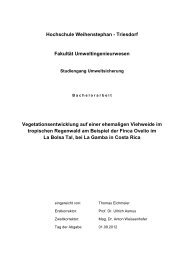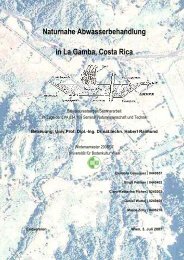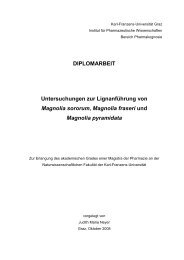Leaf colour patterns, vegetative and sexual reproduction of Episcia ...
Leaf colour patterns, vegetative and sexual reproduction of Episcia ...
Leaf colour patterns, vegetative and sexual reproduction of Episcia ...
Create successful ePaper yourself
Turn your PDF publications into a flip-book with our unique Google optimized e-Paper software.
• Pollen-packing theory (Brunet 1992); the amount <strong>of</strong> pollen grains gets reduced when<br />
the presentation period is prolonged.<br />
• Ovule-packing theory (Burd 1995); if more ovules per flower are produced, the<br />
<strong>reproduction</strong> success is enhanced. The success would be higher, even when not all<br />
ovules were fertilized. Thus, less pollen grains were needed to enable a successful<br />
pollination.<br />
• Pollen-grain junctions; they lead to pollen agglutination, which increases the efficiency<br />
<strong>of</strong> the pollen-transfer (Cruden <strong>and</strong> Jensen 1979).<br />
Which <strong>of</strong> these factors is responsible for the low P/O ratio <strong>of</strong> <strong>Episcia</strong> lilacina was not<br />
investigated in detail, but the last mentioned may well apply. Albrecht (1999) made similar<br />
observations. She investigated for the first time different species <strong>of</strong> Gesneriaceae with regard to<br />
their P/O ratios. Thereby, species were found (e.g. Achimenes gr<strong>and</strong>iflora, A. misera, Nauticalyx<br />
adenosiphon, Paradrymonia lineata), which were - like <strong>Episcia</strong> lilacina - despite <strong>of</strong> a low P/O ratio - not<br />
autogamous. Albrecht (1999) claimed that the reason for this phenomenon are pollen<br />
agglutinations, which enhance the efficiency <strong>of</strong> the pollination process. Such agglutinations were<br />
observed with <strong>Episcia</strong> lilacina, too. Therefore, they are perhaps the reason for the occurring P/O<br />
ratio.<br />
Apparently, each major taxon needs its own st<strong>and</strong>ard for evaluating its breeding system,<br />
because a lot <strong>of</strong> factors influence the P/O ratio in such a way that it cannot be meaningfully<br />
compared (Vasek <strong>and</strong> Weng 1988, Erbar <strong>and</strong> Langlotz 2005). It is necessary to take the family<br />
Gesneriaceae more precisely into account to reveal why some genera have reduced their pollen<br />
grain to ovule ratio.<br />
Nectar Secretion<br />
The immobility <strong>of</strong> plants creates an obstacle in the dispersal <strong>of</strong> their genes. To alleviate this<br />
problem, the majority <strong>of</strong> all plants have developed a mutual partnership with animals, which<br />
transport pollen grains <strong>and</strong> also disperse seeds. In the case <strong>of</strong> pollination, the animals transport<br />
pollen in turn for a food reward. Nectar is one <strong>of</strong> the rewards. It serves as energy supplier for the<br />
pollinators. Its accessibility in relation to floral morphology but also the amount <strong>and</strong> the<br />
concentration <strong>of</strong> produced nectar allows a conclusion which animal groups use the nectar <strong>of</strong><br />
<strong>Episcia</strong> lilacina <strong>and</strong> may be the legitimate pollinator.<br />
66



